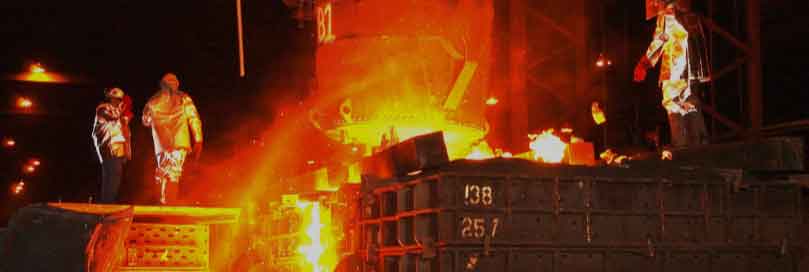
Cast iron and ductile iron are two different types of iron alloys that have distinct properties and applications. While both are iron-based materials, they differ in terms of their microstructure and mechanical properties. Here’s a comparison between cast iron and ductile iron:
- Microstructure:
- Cast Iron: Cast iron typically has a microstructure consisting of graphite flakes embedded in a matrix of ferrite and/or pearlite. The presence of graphite gives it its characteristic gray appearance.
- Ductile Iron: Ductile iron, also known as nodular or spheroidal graphite iron, has a microstructure with graphite nodules or spheres distributed throughout a matrix of ferrite and/or pearlite. These nodules enhance the material’s strength and ductility.
- Strength and Ductility:
- Cast Iron: Cast iron is relatively brittle and has low ductility, meaning it does not deform significantly under tensile stress. It has excellent compressive strength, making it suitable for applications where compression and wear resistance are important.
- Ductile Iron: Ductile iron retains the desirable properties of cast iron, such as high compressive strength and wear resistance, while also exhibiting improved ductility. It can deform plastically under tensile stress, making it more suitable for applications that require some degree of flexibility.
- Mechanical Properties:
- Cast Iron: Cast iron has high hardness and good machinability, making it suitable for applications such as engine blocks, pipes, and cookware. However, it tends to be brittle and may fracture under impact or shock loading.
- Ductile Iron: Ductile iron offers a balance between strength, ductility, and toughness. It is commonly used in applications requiring high strength and toughness, such as automotive components, pipes, gears, and heavy machinery parts.
- Castability:
- Cast Iron: Cast iron has excellent castability, meaning it can be easily poured into complex shapes and intricate molds. It has a low melting point and good fluidity, allowing for detailed casting designs.
- Ductile Iron: Ductile iron is also highly castable, enabling the production of complex shapes and thin-walled components. It requires specific control of the casting process to ensure the formation of nodules instead of flakes.
- Corrosion Resistance:
- Cast Iron: Cast iron is susceptible to corrosion and may rust when exposed to moisture or certain environments. It often requires protective coatings or surface treatments to improve its corrosion resistance.
- Ductile Iron: Ductile iron exhibits better corrosion resistance than cast iron due to the presence of graphite nodules. However, it may still require additional measures to enhance its resistance to specific corrosive conditions.
While both cast iron and ductile iron are iron alloys, ductile iron offers superior mechanical properties and increased ductility compared to cast iron. Ductile iron is suitable for applications requiring higher strength and toughness, while cast iron is favored for its compressive strength and excellent machinability. The choice between the two depends on the specific requirements of the application and the desired balance of properties.
